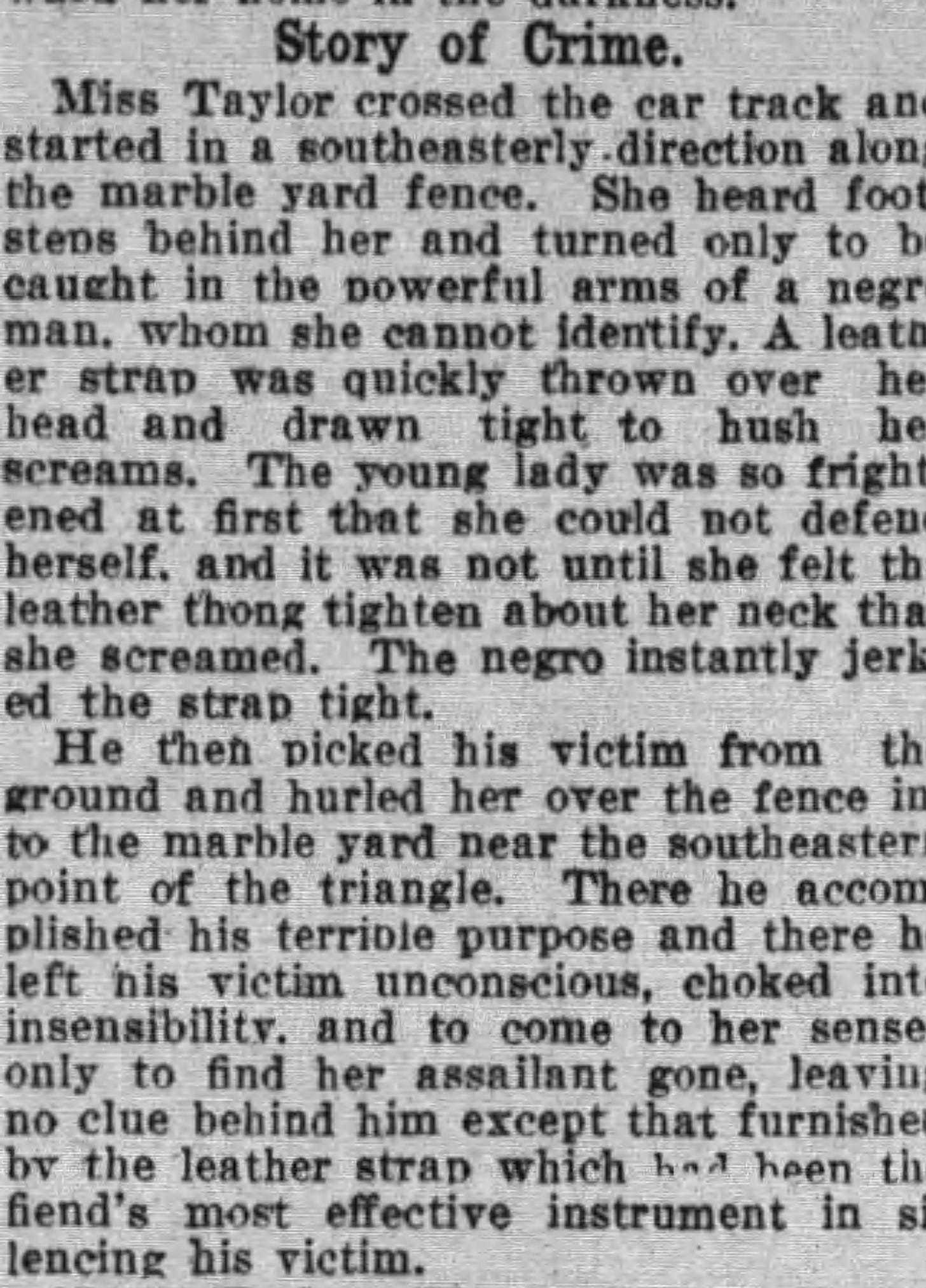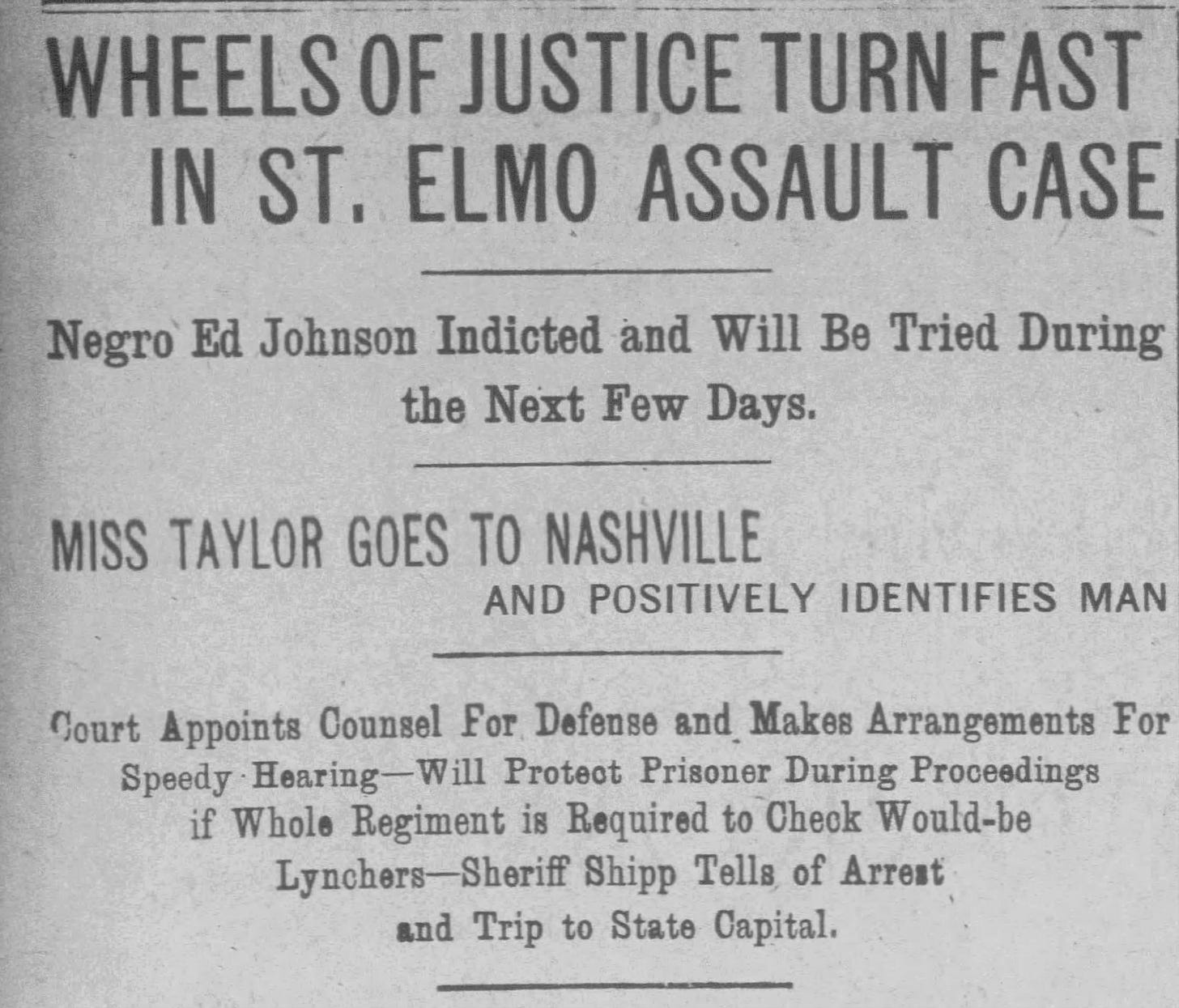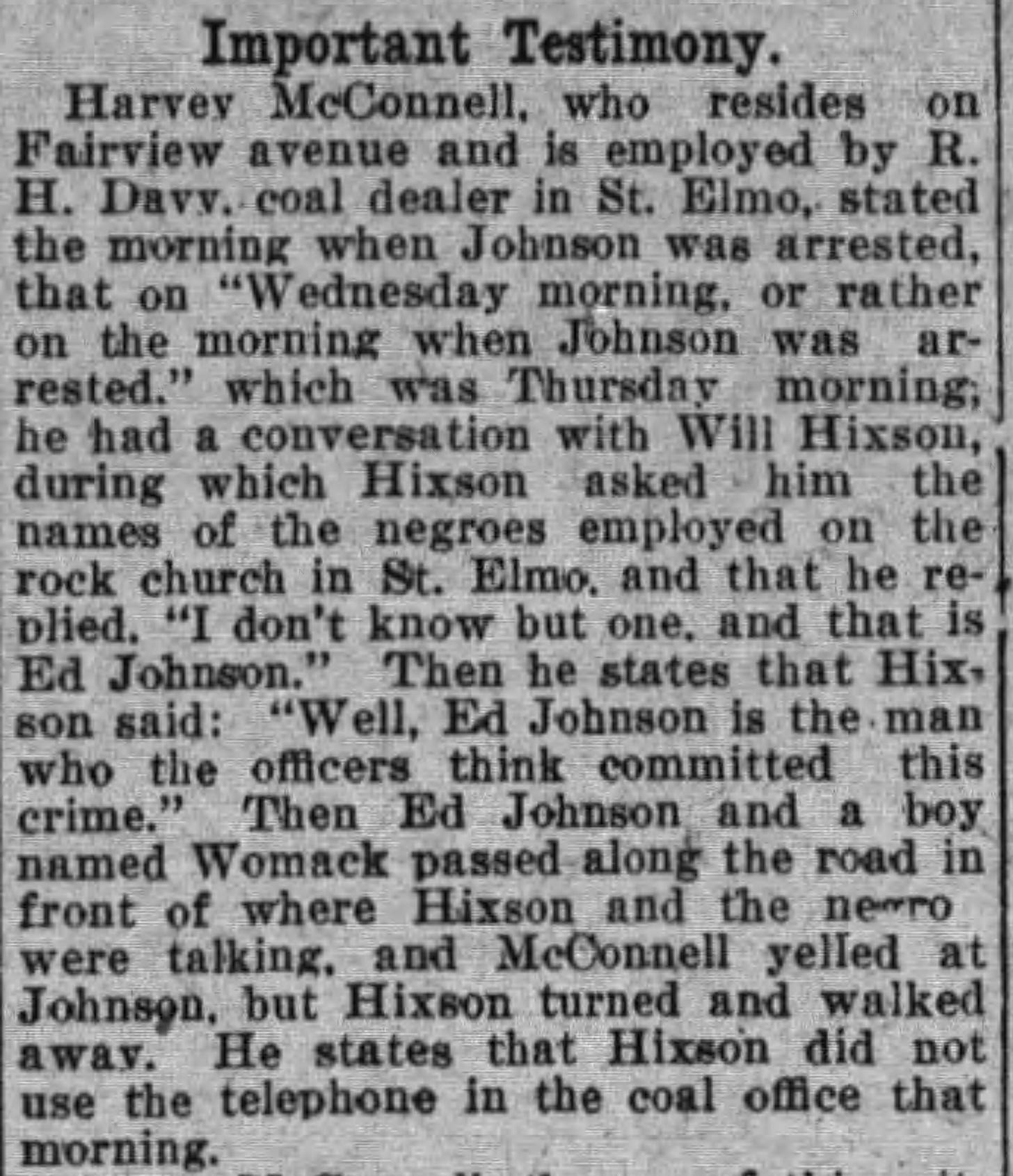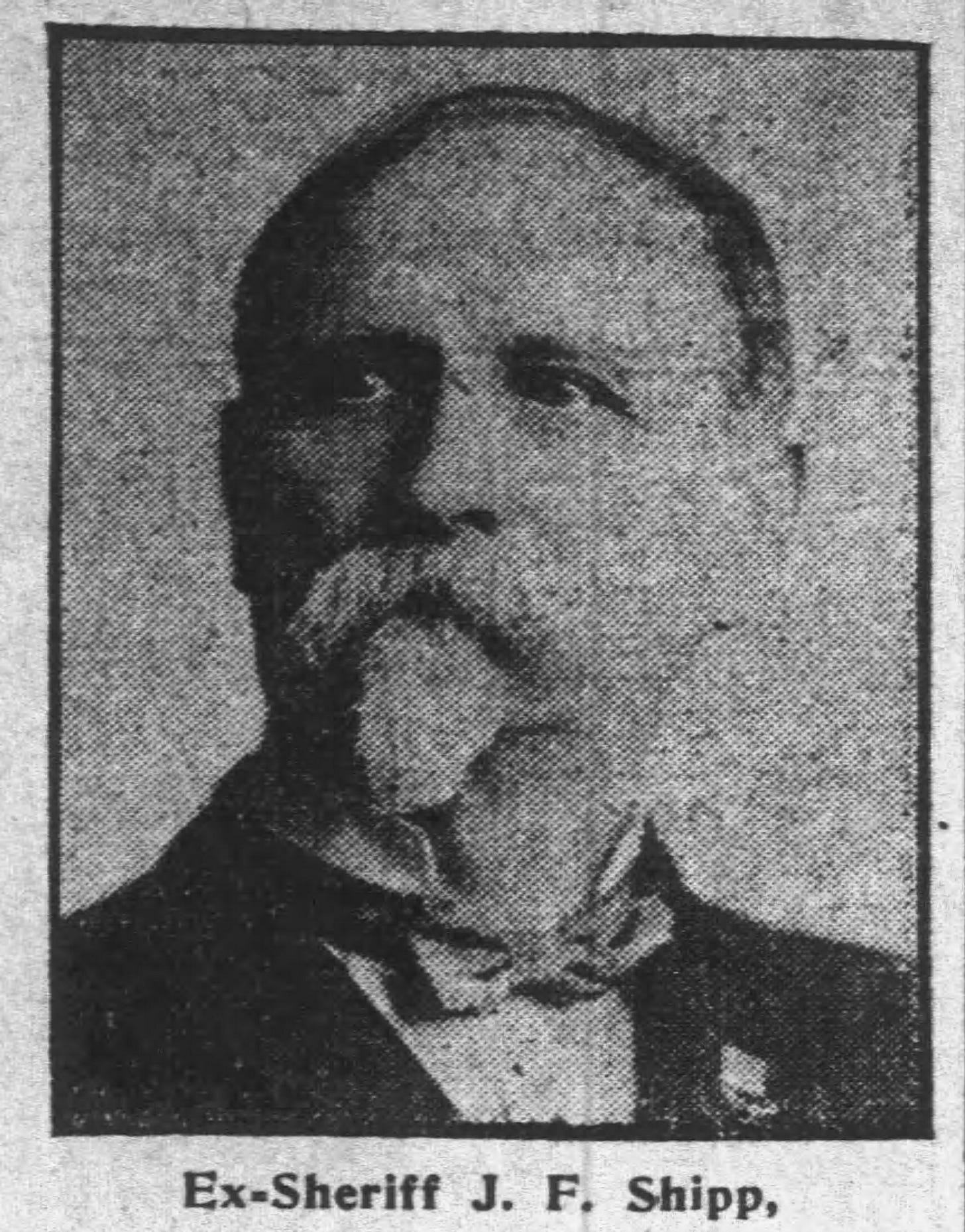Travesty of Justice: The Tragic Lynching of Ed Johnson
In 1906, Ed Johnson was falsely accused and convicted for a crime he did not commit. Tragically, he would become a victim of vigilante violence amidst a climate of fear and racial hostility
Background
In December 1905, Racial tensions were high in Chattanooga, Tennessee. Residents were fearful as the local newspapers reported that a “black crime wave” was sweeping the city.
Between December 11 and December 23 there was a rape, an assault, and an assault and burglary. On Christmas Eve, a gambler fatally shot a Chattanooga constable, pleading self-defense. Then, on Christmas Day, eight more robberies or assaults were committed by black suspects against white victims.
The newspapers seized on the sudden wave of violence to both sell copies and exploit the fears and prejudices of some of the city’s white residents. Sadly, it was in this climate of hostility that an innocent man named Ed Johnson would become a victim of vigilante violence.
Assault of Nevada Taylor
On January 23, 1906, Nevada Taylor, a white woman, was attacked while walking from a streetcar stop to her home. She would later say she only remembered a black man grabbing her purse, putting a leather strap around her neck, and assaulting her. A doctor would later confirm she’d been sexually assaulted.
After the attack, Nevada hurried home to the Chattanooga Forest Hills Cemetery, where her father lived as the caretaker. The assault was reported to Hamilton County Sheriff Joseph Shipp, who promised the Taylors swift justice.
A reward of $375 was offered for information relating to the crime. Within days, Sheriff Shipp arrested a local man named James Broaden who fit the description Taylor had given.
Arrest of Ed Johnson
A day after Broaden’s arrest, Sheriff Shipp also arrested a man named Ed Johnson. Johnson worked as a porter at the Last Chance Saloon. By all accounts, he was a hardworking and law-abiding citizen.
Johnson had been hard at work on the night of January 23, at the time the assault of Nevada Taylor occurred.
Even though the night was dark, and Miss Taylor admitted to losing consciousness, she later identified Ed Johnson as her attacker. A witness claimed to have seen Johnson by the streetcar stop, holding a leather strap.
Despite other reputable witnesses who could attest to Johnson working that night, he was arrested for the assault.
On the night of Johnson’s arrest, an angry mob of at least 1,500 citizens surrounded the jail. They wanted Johnson and two other black prisoners for their own brand of justice – a lynching.
With tensions already high, and fearing such a situation, Sheriff Shipp had already sent Johnson and Broaden to the Nashville Jail. The mob refused to leave until Hamilton County Judge Samuel D. McReynolds spoke to them and promised swift justice. Eventually, the crowd dispersed, but their anger was far from over.
Trial
After being indicted by a grand jury, Johnson was brought back to Chattanooga on February 6 to stand trial. Judge McReynolds presided over the trial.
On the stand, Taylor, who had previously identified Johnson at the jail, admitted she lost consciousness during the attack. She would never definitively state Johnson was the one who attacked her, only that she was “almost certain” it was him.
Johnson’s defense team presented thirteen witnesses who placed him at the Last Chance Saloon at the time of the assault. When that failed to sway the jury, they attempted to undermine the testimony of the “witness” who claimed to have seen Johnson twirling a leather strap at the streetcar stop.
The defense eventually proved that the witness, Will Hixson, had never even seen Johnson. In order to collect the reward, he obtained Johnson’s description from someone else before going to the police.
When the all white jury reached a verdict, eight jurors favored conviction while four voted for acquittal. Ed Johnson was sentenced to die on March 13th for the assault of Nevada Taylor, a woman he’d never met.
Appeals
Johnson’s defense team considered filing an appeal but decided against it. They saw little hope of succeeding. Filing an appeal would likely be fruitless and might even lead to more racial tension and more deaths.
However, two local black lawyers, Noah Parden and Styles Hutchins, refused to let this injustice stand. Parden and Hutchins courageously decided to do their best to help Johnson. Despite receiving death threats, they filed an appeal, which was quickly denied.
Not willing to give in, Parden appealed to the Tennessee Supreme Court. That appeal was also denied. Then, in an unprecedented move, Parden filed a writ of habeas corpus with the U.S. Circuit Court in Knoxville, Tennessee.
To the astonishment of everyone involved, the court agreed to grant a stay of execution, moving Johnson’s execution to March 20. Hopeful, Parden traveled to Washington, D.C., to petition the U.S. Supreme Court. In another unprecedented move, Justice John Marshall Harlan agreed to a stay of execution to hear the appeal.
Abduction and Murder
On the night of March 19, 1906, a lynch mob, in direct violation of the U.S. Supreme Court’s orders, took matters into their own hands. In a complete disregard for the rule of law, local law enforcement helped carry out the brutal killing.
Usually, the jail where Johnson was held was well guarded. However, that night, Sheriff Shipp excused all the guards except for one older man, Jeremiah Gibson. This left the jail virtually unguarded. Additionally, all other prisoners except Johnson and a white woman were moved.
As planned, a group of men entered the jail. It took them three hours to batter down the third-floor doors using an ax and sledgehammer to reach Johnson’s cell. At some point, Sheriff Shipp was notified and arrived at the jail.
He made a half-hearted effort to disuade the mob but was told to be quiet. When he protested again, several men took him to a restroom and told him to stay there. Even though Shipp wasn’t locked in and was free to leave, he did not attempt to leave or to stop the abduction.
The mob eventually reached Johnson, dragging him from the cell and down to the Walnut Street Bridge. It was this bridge that black residents used daily to come into Chattanooga for work. The mob believed lynching Johnson there would send a message to others. Someone tied a rope around his neck and looped it over a beam. Johnson’s last words were, “God Bless You all. I am an innocent man.”
When Johnson didn’t die immediately, the mob grew impatient and shot him as many as fifty times. One bullet severed the rope, causing Johnson to fall to the ground. When the crowd saw he was still moving, a deputy sheriff put five more bullets in his brain.
Aftermath
News of Johnson’s abduction and murder soon reached Washington, D.C., and President Teddy Roosevelt, as well as members of the Supreme Court, demanded answers.
A defiant Sheriff Shipp blamed Johnson’s death, not on the angry mob, but on the Supreme Court’s interference in a local matter. He laid the blame on Justice Harlan’s stay of execution.
In another unprecedented move, the U.S. Supreme Court held the only criminal trial in its history, the United States v. Shipp. Nine men were tried: Sheriff Shipp, deputies Matthew Galloway, Jeremiah Gibson, Nick Nolan (who placed the noose around Johnson’s neck), William Mayes, Henry Padgett, Alf Handman, Bart Justice, and Luther Williams, who fired the five fatal shots into Johnson’s brain.
However, rather than facing murder charges, the men were all tried for contempt of court, which carried a maximum sentence of 180 days in jail. In May 1909, Shipp, Nolan, Padgett, Mayes, Williams, and Gibson were found guilty. The other three defendants were acquitted.
Schipp, Nolan, and Williams were each sentenced to 90 days, while Padgett, Mayes, and Gibson each received 60 days.
One of the justices remarked, “Shipp not only made the work of the mob easy, but in effect aided and abetted it.” Still, after serving his 90 days, Shipp returned to Chattanooga, a hero to some, while Johnson’s lawyers, Noah Parden and Styles Hutchins, were chased out of Tennessee.
Legacy
In February 2000, Hamilton County Criminal Judge Doug Meyer revisited the trial of Ed Johnson. Ninety-four years after his death, Johnson’s conviction was overturned. On September 19, 2021, a memorial statue for Ed Johnson was erected near the site of his death. A reminder not to forget the injustices of the past.
Sources:
Sources: Arbelaez-Lopez, M. I. (1906). Lynching in America: A Case Study of Ed Johnson (Perspective 1). In JSHS: Journal of Student Historical Research (pp. 12–14). https://www.tnstate.edu/history/journal/3. Maria Lopez.pdf
History — Friends of the Ed Johnson Memorial. (n.d.). Friends of the Ed Johnson Memorial. https://www.edjohnsonproject.com/history
Thrive, T. A. (n.d.). Justice for Ed Johnson: Lynching, the Supreme Court, and the Fight for Civil Rights. Teach ’n Thrive. https://teachnthrive.com/history-passages/u-s-passages/justice-for-ed-johnson-lynching-the-supreme-court-and-the-fight-for-civil-rights/
Villafranca, O. (2021, September 20). 115 years after mob lynching, Chattanooga honors Ed Johnson with memorial. CBS News. https://www.cbsnews.com/news/ed-johnson-memorial-chattanooga-walnut-street-bridge/
Wikipedia contributors. (2025, April 27). Lynching of Ed Johnson. Wikipedia. https://en.wikipedia.org/wiki/Lynching_of_Ed_Johnson















Few people were willing to trust a Black man at his word then. Johnson was a victim of a country divided over his legal status just as much, if not more, than he was as a victim of a lynch mob.